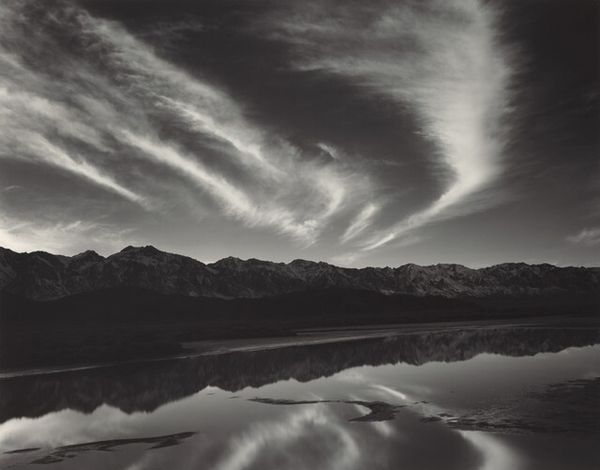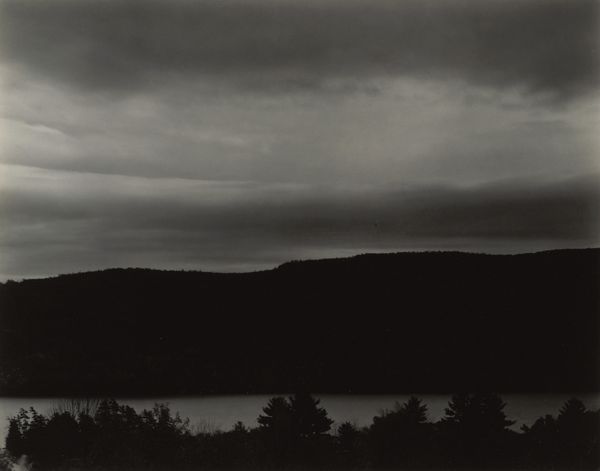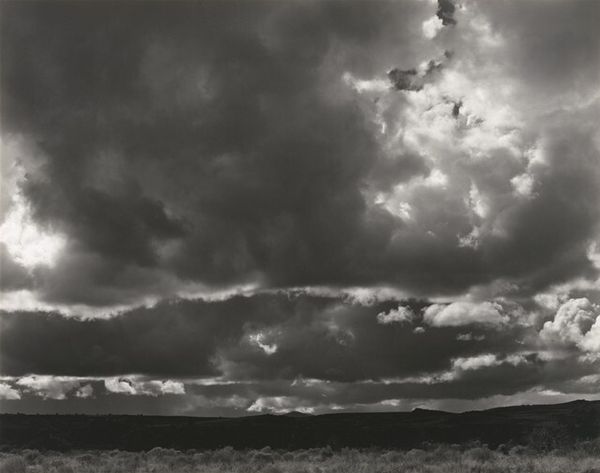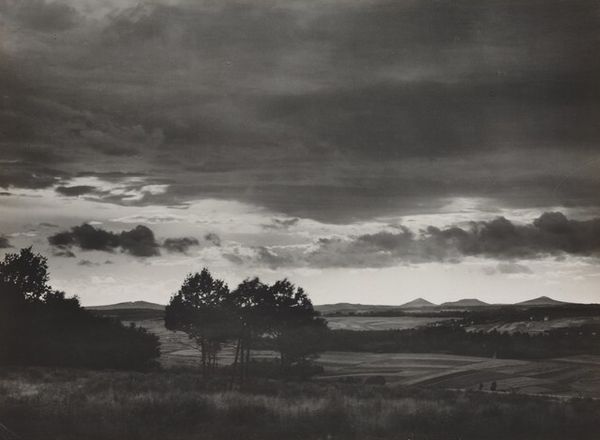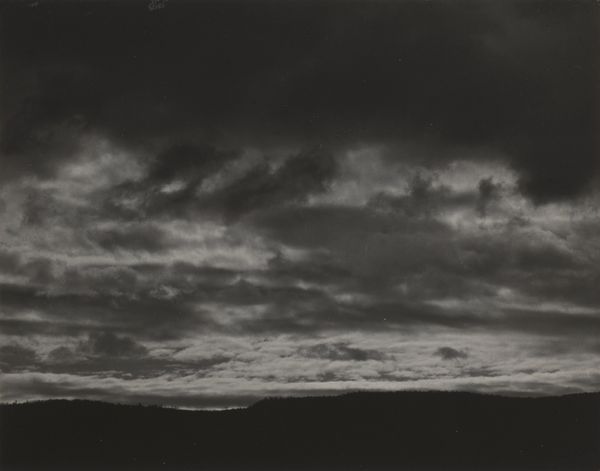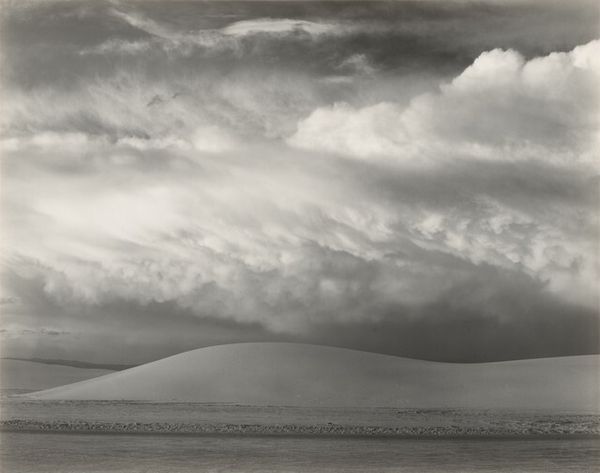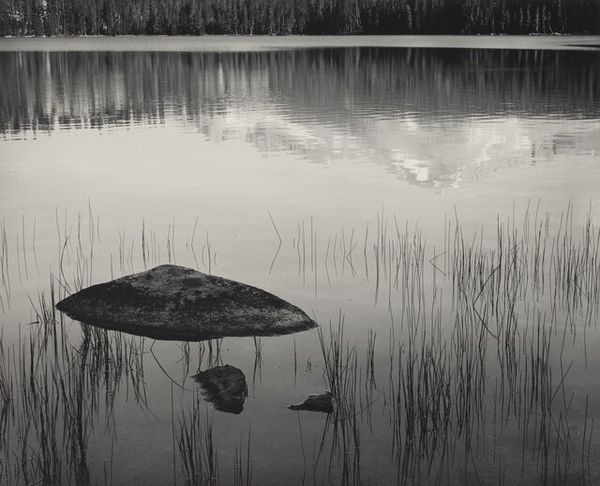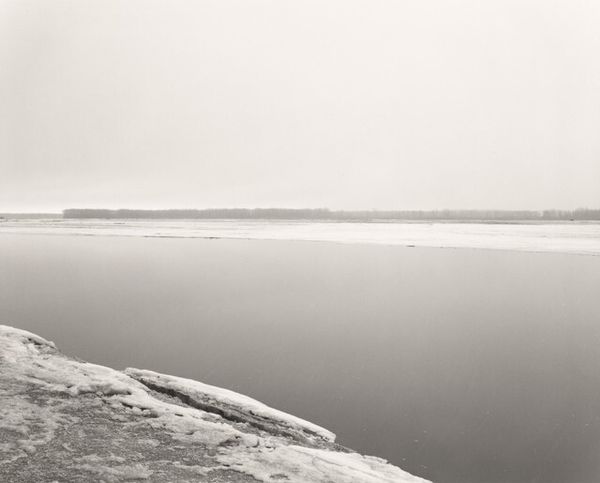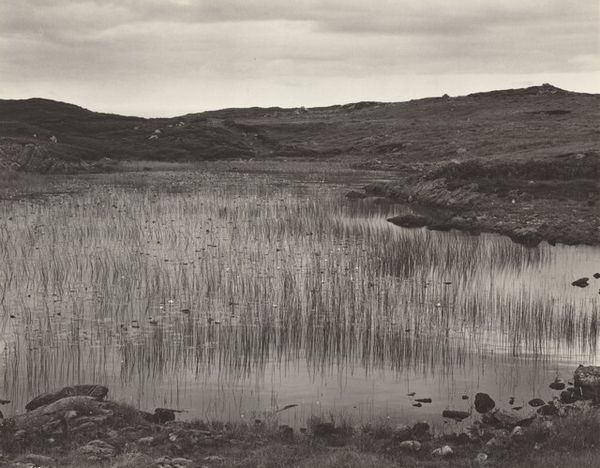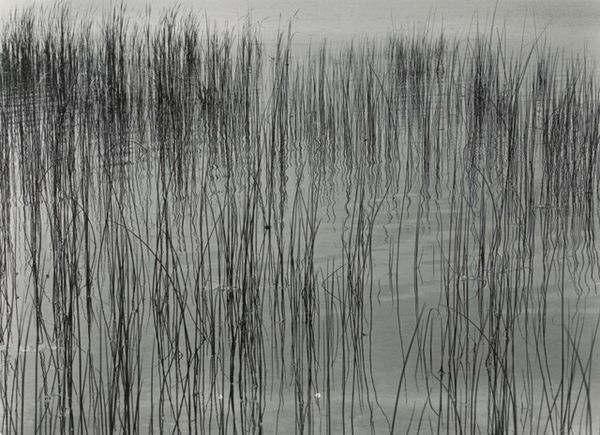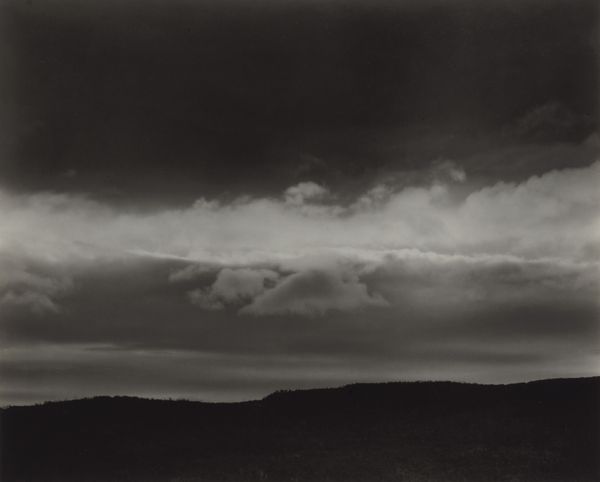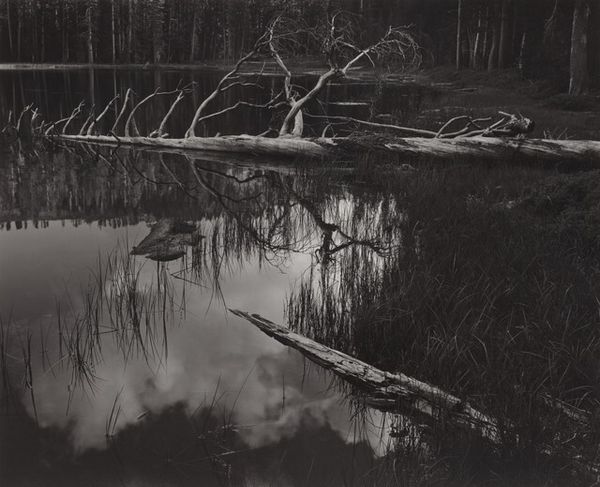
#
black and white photography
#
snowscape
#
eerie mood
#
low atmospheric-weather contrast
#
monochrome photography
#
gloomy
#
fog
#
monochrome
#
mist
#
shadow overcast
Dimensions: overall: 49.6 x 38.7 cm (19 1/2 x 15 1/4 in.)
Copyright: National Gallery of Art: CC0 1.0
Editor: Here we have Ansel Adams' "Mono Lake, California," a photograph taken sometime between 1947 and 1981. The monochromatic tones give it this haunting, ethereal quality. The reflection of the clouds on the water is just stunning. What stands out to you about this piece? Curator: The history of Mono Lake itself is key to understanding this photograph's impact. Adams’ work often intersected with environmental activism, and Mono Lake was, and still is, threatened by water diversion to Los Angeles. He was a major proponent of the need to maintain the lake level. Do you see how the stillness almost amplifies a sense of fragility? Editor: Absolutely. It's like the reflection could shatter at any moment. It feels really pertinent that it was taken over such a long time period - late 40's up to the early 80's. It speaks of continuous struggle? Curator: Precisely. Adams returned to the same location, driven by his artistic vision, and that commitment highlights his engagement. Photography played a pivotal role in shaping public opinion regarding environmental conservation during that era, and images such as this sought to invoke an emotional response towards an threatened area. Does knowing the background alter how you feel about the composition? Editor: Definitely. It goes from being just a beautiful landscape to something much more politically charged. The dead tree in the foreground adds this sense of impending doom that, previously, I just attributed to its eeriness. I'm starting to think about how manipulated photographs can be for agenda setting. Curator: It serves as a powerful reminder that art rarely exists in a vacuum, and understanding its context can fundamentally change our interpretation. Editor: I think I understand the political potential of environmental imagery a lot more clearly. It's more than just "pretty pictures." Curator: Indeed. Looking at art through the lens of history reveals the multiple layers of meaning embedded within a work, allowing a more in depth appreciation of the image's lasting cultural significance.
Comments
No comments
Be the first to comment and join the conversation on the ultimate creative platform.
